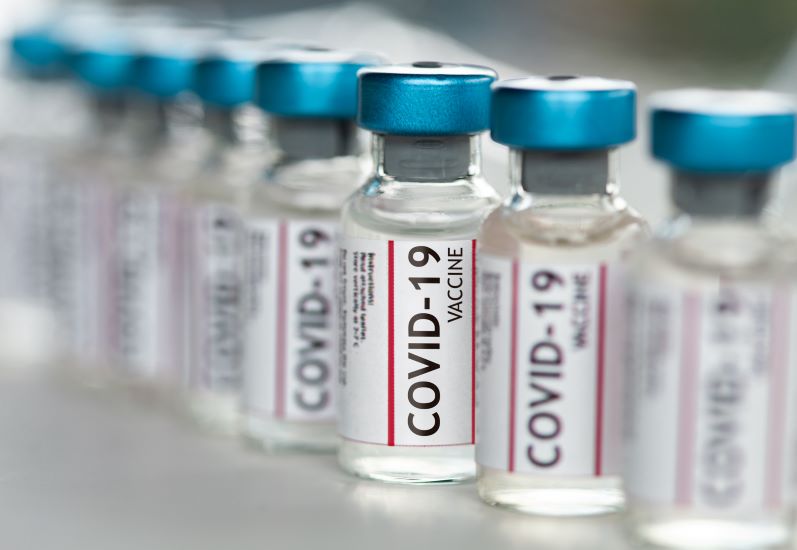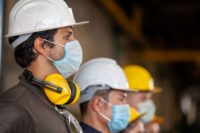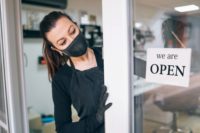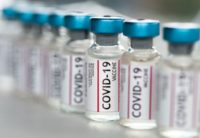5 ways to minimize industrial worker exposure to COVID-19

Vaccines have been rolling out, but COVID-19 is still a threat. As industrial facilities push through what is hopefully the final stretch of the pandemic, they need to remain cautious. It’s perhaps more crucial than ever to minimize worker exposure to COVID-19.
Most, if not all, facilities are already aware of the universal steps to minimize exposure. Employers and employees alike know to stay six feet apart and wear masks, but anti-COVID measures can go further.
Here are five more industry-specific steps that industrial facilities can apply to keep workers safe.
1. Require self-monitoring and testing
One of the best ways to minimize COVID-19 exposure is to keep virus carriers out of the building. Many workplaces perform pre-work temperature checks, but these are typically inaccurate and expensive. Employee self-monitoring may be a better alternative. Workers should have to report their recent temperature and symptoms to employers before work.
Of course, self-monitoring techniques aren’t always accurate, either, as workers can lie or make mistakes. To work around this, facilities could require frequent COVID-19 nasal swabs. If an employee tests positive, they should isolate, and their coworkers should get tested as well to see if they’ve also contracted the virus.
2. Use smaller, staggered shifts
Industrial facilities are at particular risk due to their high volume of workers and typically confined spaces. Employers can make the most of this situation by using smaller shifts and minimizing the number of people in the building at once. Automation can help make up for any productivity losses this creates.
Even within the same shift, facilities should stagger breaks to minimize close contact. Employee break rooms are often too small to enable social distancing for many people. If only a few workers took a break at a time, this would be less of a concern.
3. Assess risks within the workplace
Every workplace has unique characteristics that could make it more or less conducive to spreading the virus. Facilities must analyze and assess these site-specific factors to understand how best to restructure their workflows. Data analytics is an indispensable tool in this regard.
Mathematical models can reveal human inhalation exposures for various particles, which can guide COVID-19 protocols. Data about how air and water droplets flow throughout the workplace will show the areas where transmission is most likely. Employers and managers can then rearrange the facility and adjust workflows accordingly.
Even with an abundance of caution, employees can still catch COVID-19. When that happens, facilities need to ensure sick workers don’t expose anyone else to the virus. Traditional sick leave policies aren’t flexible or forgiving enough to enable appropriate measures, so workplaces should change them.
The Centers for Disease Control and Prevention (CDC) recommends a 14-day quarantine not just for workers with COVID-19 but also those exposed to someone who might’ve had it. As such, facilities should require employees to quarantine if they suspect they’ve been exposed.
For that to happen, sick leave policies will have to be flexible and enticing enough for workers to take the time they need comfortably.
5. Turn to technology for help
Industrial facilities’ size, noise, and limited visibility can make some measures, like social distancing, challenging to maintain. Technology like IoT (Internet of Things) devices can help workers stay safe amid these challenges. For example, some Amazon warehouses have implemented wearable proximity sensors to alert workers when they’re within six feet of another.
Static sensors throughout a warehouse or factory can monitor potentially high-traffic zones for social distancing violations. If their data shows frequent problems in one area, the facility can adjust as necessary. IoT air quality sensors can help ensure consistent, clean airflow in the building, removing harmful particles.
Safety is a top concern for industrial workers amid COVID-19
With the pandemic’s end on the horizon, many industrial facilities may overlook safety in favor of increasing productivity. As tempting as this is, employers must ensure they maintain a safe work environment to bring a quicker end to this health crisis. The health and safety of employees is the most crucial factor.
These five steps can help any industrial workplace ensure the safety of its workers. With careful planning and implementation, workplaces can maintain productivity while staying safe from COVID-19.
Looking for a reprint of this article?
From high-res PDFs to custom plaques, order your copy today!








